
Purple sage has various uses, mostly referring to plants.

Purple sage has various uses, mostly referring to plants.

Salvia officinalis, the common sage or just sage, is a perennial, evergreen subshrub, with woody stems, grayish leaves, and blue to purplish flowers. It is a member of the mint family Lamiaceae and native to the Mediterranean region, though it has been naturalized in many places throughout the world. It has a long history of medicinal and culinary use, and in modern times it has been used as an ornamental garden plant. The common name "sage" is also used for closely related species and cultivars.

Artemisia is a large, diverse genus of plants with between 200 and 400 species belonging to the daisy family Asteraceae. Common names for various species in the genus include mugwort, wormwood, and sagebrush.

Artemisia tridentata, commonly called big sagebrush, Great Basin sagebrush or (locally) simply sagebrush, is an aromatic shrub from the family Asteraceae, which grows in arid and semi-arid conditions, throughout a range of cold desert, steppe, and mountain habitats in the Intermountain West of North America. The vernacular name "sagebrush" is also used for several related members of the genus Artemisia, such as California sagebrush.
Sage or SAGE may refer to:

Leucophyllum is a genus of evergreen shrubs in the figwort family, Scrophulariaceae, native to the southwestern United States and Mexico. It is sometimes placed in the family Myoporaceae. The dozen-odd species are often called "sages", although they have no relationship to the genus Salvia.

Coastal sage scrub, also known as coastal scrub, CSS, or soft chaparral, is a low scrubland plant community of the California coastal sage and chaparral subecoregion, found in coastal California and northwestern coastal Baja California. It is within the California chaparral and woodlands ecoregion, of the Mediterranean forests, woodlands, and scrub biome.

Salvia leucophylla, the San Luis purple sage, purple sage, or gray sage, is an aromatic sage native to the southern coastal mountain ranges of the Californias.
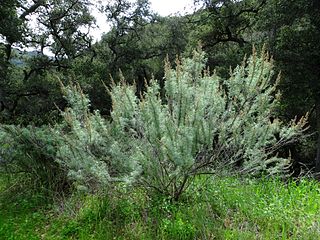
Artemisia californica, also known as California sagebrush, is a species of western North American shrub in the sunflower family.
Texas sage may refer to:

Leucophyllum frutescens is an evergreen shrub in the figwort family, Scrophulariaceae, native to the state of Texas in the Southwestern United States and the states of Coahuila, Nuevo León, and Tamaulipas in northern Mexico. Although commonly known as Texas sage, it is not a true sage and is distinct from the genus Salvia. The species is also called Texas Ranger, Texas rain sage, cenizo, Texas silverleaf, Texas barometerbush, ash-bush, wild lilac, purple sage, senisa, cenicilla, palo cenizo, or hierba del cenizo.
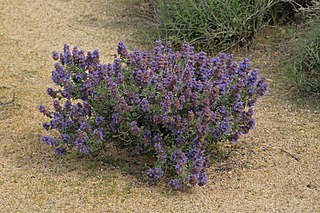
Salvia dorrii, the purple sage, Dorr's sage, fleshy sage, mint sage, or tobacco sage, is a perennial spreading shrub in the family Lamiaceae. It is native to mountain areas in the western United States and northwestern Arizona, found mainly in the Great Basin and southward to the Mojave Desert, growing in dry, well draining soils.
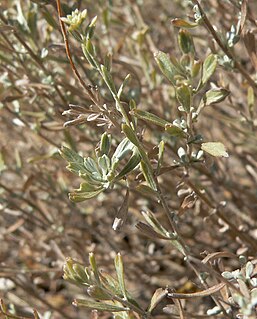
Artemisia bigelovii is a North American species of sagebrush known by the common name Bigelow sagebrush or flat sagebrush. It grows in the deserts of the southwestern United States.

Salvia ballotiflora is a species of flowering plant in the mint family, Lamiaceae, that is native to Texas in the United States as well as northeastern and central Mexico. Common names include shrubby blue sage and mejorana.

Salvia texana, commonly called Texas sage, is a species of flowering plant in the mint family (Lamiaceae). It is native to North America, where it is found in northern Mexico, and in the U.S. states of Texas and New Mexico. Its natural habitat is dry areas on limestone soils, in prairies or over rock outcrops.

Artemisia cana is a species of sagebrush native to western and central North America, a member of the sunflower family. It is known by many common names, including silver sagebrush, sticky sagebrush, silver wormwood, hoary sagebrush, and dwarf sagebrush.
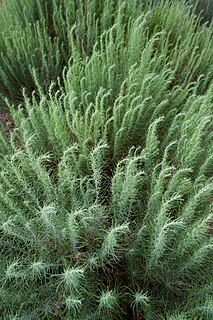
Artemisia filifolia, known by common names including sand sagebrush, sand sage and sandhill sage, is a species of flowering plant in the aster family. It is native to North America, where it occurs from Nevada east to South Dakota and from there south to Arizona, Chihuahua, and Texas.
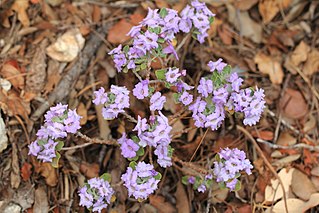
Leucophyllum langmaniae is a shrub native of Mexico, semi-evergreen, with gray-green leaves of velvety texture. Its shape is branched and compact, forming a rounded mass of up to 1 m high and wide. The flowers are lavender. They appear in the fall, and are even more abundant if drought or heat waves were important.
Zane Grey purple sage sagebrush.
Riders of the Purple Sage.